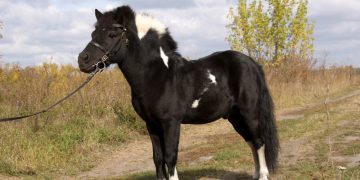If you’ve noticed that your kitten has two sets of fangs, you might be wondering if this is normal or if there’s something wrong. Seeing double canine teeth in a kitten can be surprising, but it’s usually a temporary issue related to teething and tooth development.
In this article, we’ll dive into:
✅ Why kittens develop double fangs
✅ Whether it’s normal or a concern
✅ How to help your kitten through the teething process
✅ When to see a vet for intervention
Why Do Kittens Have Double Fangs?
Kittens, like human babies, go through a teething process where their baby teeth fall out and are replaced by adult teeth. However, sometimes the baby teeth don’t fall out properly before the adult teeth grow in, leading to a condition known as retained deciduous teeth.
1. Normal Kitten Teething Timeline
Kittens are born without teeth, but their baby teeth (also called deciduous teeth) start growing at around 2 to 4 weeks old.
Here’s a breakdown of kitten tooth development:
| Age | Tooth Development |
|---|---|
| 2-4 weeks | Baby teeth start emerging. |
| 5-6 weeks | All 26 baby teeth are in place. |
| 3-4 months | Baby teeth begin falling out as adult teeth grow in. |
| 5-6 months | Adult teeth replace baby teeth (should have 30 permanent teeth). |
During the 3 to 6-month period, it’s common to see a kitten with double fangs because their baby canine teeth haven’t fallen out yet while the adult fangs are coming in.
2. Retained Deciduous Teeth (When Baby Fangs Don’t Fall Out)
Sometimes, a kitten’s baby fangs don’t fall out naturally, which leads to two sets of fangs being visible at the same time. This happens most commonly with the canines (fangs).
Causes of Retained Baby Teeth in Kittens
🦷 Genetic predisposition – Some breeds, like Persians and Siamese, are more prone to retained teeth.
🦷 Crowding issues – If the adult tooth erupts too close to the baby tooth, it may not push the baby tooth out.
🦷 Malocclusion (misaligned teeth) – Irregular tooth alignment can prevent proper shedding of baby teeth.
🦷 Lack of root resorption – Normally, baby teeth dissolve at the root as adult teeth push through. If this doesn’t happen, the baby tooth stays in place.
3. How Long Do Double Fangs Last?
In most cases, the double fangs will resolve naturally within a few weeks as the baby teeth loosen and fall out. However, if the retained baby tooth doesn’t fall out by 6 months of age, it may require veterinary extraction to prevent dental issues.
Should You Be Concerned About Kitten Double Fangs?
While seeing double fangs in a kitten is common during teething, it can lead to dental problems if not addressed. Here’s what can happen:
❌ Overcrowding & Misalignment – Two teeth in the same space can push against each other, leading to crooked teeth or bite problems.
❌ Increased Risk of Plaque & Tartar – Retained baby teeth create tight spaces that trap food and bacteria, leading to early dental disease.
❌ Gum Inflammation & Infection – If the baby tooth stays too long, it can cause gingivitis or even abscesses.
❌ Pain or Discomfort – Some kittens may experience soreness or difficulty eating due to crowding.
How to Help a Kitten with Double Fangs
If you notice your kitten has double fangs, here’s what you can do:
✅ 1. Monitor the Teeth
- Check your kitten’s mouth weekly to see if the baby fangs start loosening.
- If the baby tooth doesn’t fall out by 6 months, consult a vet.
✅ 2. Encourage Chewing
- Provide safe chew toys like soft rubber teething toys.
- Avoid hard bones or items that could break their fragile teeth.
- Wet food may help if their gums are sore.
✅ 3. Maintain Dental Hygiene
- Gently wipe your kitten’s teeth with a soft cloth or pet-safe toothbrush.
- Use cat-friendly toothpaste (never human toothpaste, as it’s toxic).
✅ 4. Schedule a Vet Visit if Needed
See a vet if:
⚠️ The baby fang hasn’t fallen out by 6 months of age.
⚠️ Your kitten shows pain, bleeding, or swollen gums.
⚠️ The double fangs are causing bite misalignment.
Veterinary Treatment for Retained Kitten Fangs
If a baby fang is not falling out naturally, your vet may recommend extraction to prevent long-term dental problems.
🦷 Tooth Extraction Procedure:
- Performed under anesthesia to ensure no pain.
- The vet removes the baby tooth while protecting the adult tooth.
- Recovery is usually quick, with minimal discomfort.
Can Retained Baby Teeth Lead to Permanent Dental Issues?
Yes, if left untreated, retained teeth can cause:
🚨 Malocclusion (bad bite) – Misaligned teeth can lead to difficulty eating.
🚨 Tooth decay & infections – Extra teeth increase plaque buildup, leading to early periodontal disease.
🚨 Weakened adult teeth – If the adult tooth doesn’t grow in correctly, it may become weaker or prone to damage.
Final Thoughts
Seeing double fangs in a kitten is usually a temporary phase during teething, but it’s essential to monitor the situation to prevent long-term dental problems.
✅ If your kitten is under 6 months old, double fangs are likely part of normal teething.
✅ If the baby teeth don’t fall out by 6 months, a vet may need to remove them.
✅ Good dental care (chew toys, brushing, vet checkups) helps ensure healthy adult teeth.
By keeping an eye on your kitten’s teeth, you can help them develop a strong, healthy smile for life! 🐱🦷✨

























